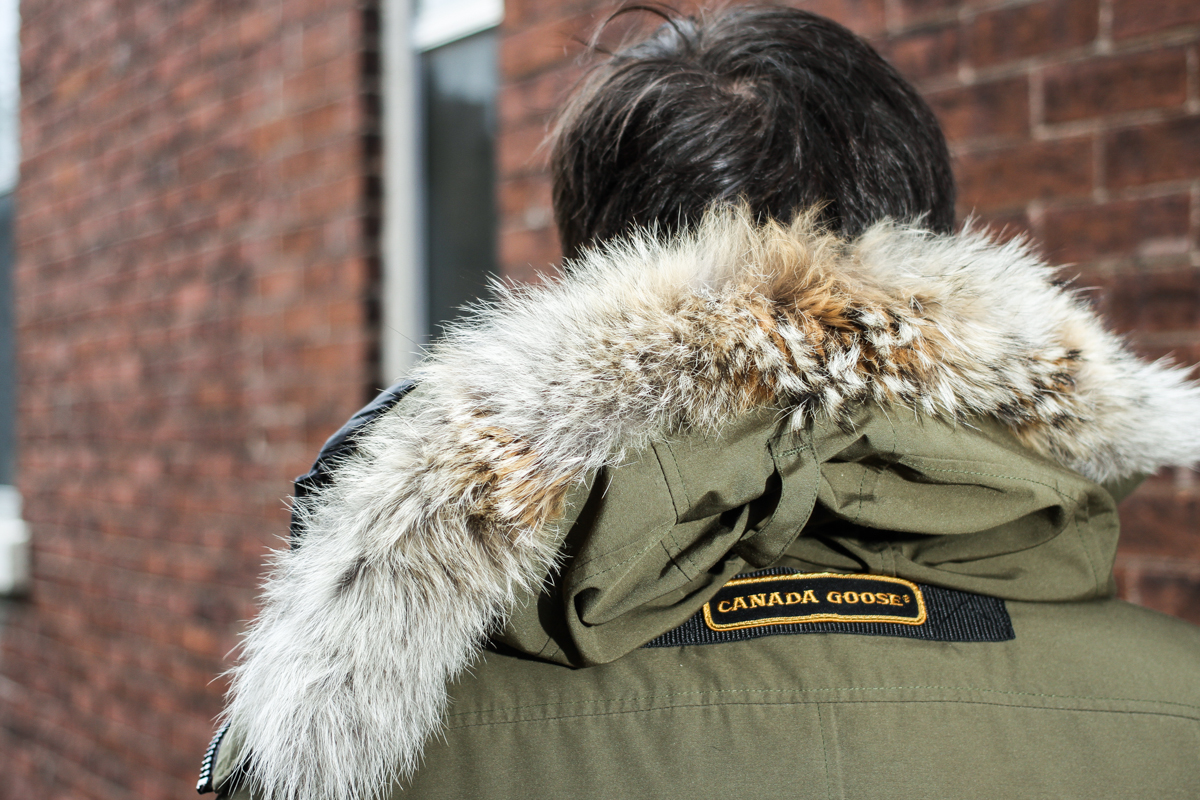Eric Simpson, PhD ’15
The first snowfall of winter means campus will be inundated with coyotes by the hundreds. I’m referring to how more and more students are donning the unofficial campus uniform: the Canada Goose jacket.
In the 1980s and 90s, the fur industry suffered from an image problem brought on by prominent animal-rights campaigns. By the end of the 80s, domestic fur production had fallen sharply to just over 30 per cent of its 1980 level.
Fast-forward to 2013: While it’s unlikely to see a full-length mink coat (circa 1950s Hollywood glam) at Queen’s, there’s a prevalence of fur lined jackets, such as the iconic coyote-fur trimmed hood of most Canada Goose jackets. What happened to the ethical objections to fur that were common 15 to 20 years ago?
The new pass for fur is especially puzzling given the recent emergence of animal rights awareness on campus. With three new courses in animal studies (two in philosophy and one in law), and two new animal advocacy organizations (Queen’s Animal Defence and the Student Animal Legal Defense Fund), it’s clear that animal welfare is being questioned by the Queen’s community like never before.
Part of the explanation for the uptick in fur fashion may be recent ad campaigns by the fur industry aimed at appeasing the ethical concerns of consumers.
Canada Goose’s “Fur Policy” closely follows the Fur Council of Canada’s “Fur is Green” marketing campaign, which promotes the connection between the fur industry and Canadian heritage and attempts to align the fur industry with the environmental movement.
The recent promotion of fur as an environmentally-friendly product has caught the attention of some environmentalists and anti-fur activists, who suggest these claims are nothing more than greenwashing.
The Association for the Protection of Fur-Bearing Animals documented sections of Canada Goose’s “Fur Policy” as it appeared in 2012, claiming that “the environmental benefits to using a natural product are clear when compared with the use of synthetics that are sometimes described as an ‘ethical’ alternative to real fur.”
The validity of this statement isn’t clear. Unfortunately, there aren’t a lot of studies that compare the environmental footprint of real fur to that of synthetic materials.
One article commonly cited by anti-fur groups is a study by the Ford Motor Company comparing the energy requirements of fur production. The study concluded that a fur coat made from wild trapped animals required 3.5 times the energy input compared to a synthetic fur coat.
While Canada Goose touts eco-friendly fur without legal consequence in Canada, the situation in Europe is quite different. A 2011 ruling by the Advertising Standard Authority in the United Kingdom found the European Fur Breeders Association’s attempt to promote fur as an environmentally-friendly product to be false and misleading.
The Fur Council of Canada argues that their product is green because real fur is a “natural fiber.” But after an animal is killed and the fur is removed, it must be heavily processed using carcinogenic chemicals to prevent it from biodegrading.
In 1995 the World Bank, in their report entitled The Industrial Pollution Projection System, ranked fur processing (and in particular the tanning process) as number three in their list of toxic industrial processes.
A 2009 report by the The Humane Society of the United States, entitled Toxic Fur, found that several dangerous chemicals, including carcinogens, were used in the processing of fur.
Branding fur as an environmental alternative isn’t just raising the eyebrows of environmentalists; animal rights groups are also fighting back.
Canada Goose obtains fur from trappers, which they argue is more humane than fur-farming, claiming they are committed to the “humane treatment of animals.”
Leg-hold traps, which are intended to capture the animal alive until the trapper returns, are still widely used in the Canadian fur trade, despite being banned in more than 80 countries due to their inhumane nature.
The regulations on how frequently trappers are required to check their traps vary by province and territory, and range between 24 hours and five days.
The Canadian Federation of Humane Societies states that if animals “are lucky, they become unconscious, and many die of dehydration, blood loss, hypothermia or predation by other animals before being found by the hunter.” It’s acknowledged that trapped animals, whether they were the targeted species or not, occasionally try to chew their own limbs off to escape.
Respect for Animals, an animal-rights organization based in U.K., released video footage taken during its two years infiltrating American fur-trapping organizations. The video shows leg-hold trapping as well as trappers crushing and strangling the trapped animals so as not to damage the pelts.
“We’d love to believe that such blatant cruelty is unusual. But it is entirely normal — and perfectly legal. In fact, such methods are enshrined in U.S. and Canadian governments guidelines on the “‘humane killing’ of trapped animals,” says Mark Glover, the director of Respect for Animals.
So why should Canada Goose get a pass, when we don’t have any reason to believe that its practices regarding the environment or animal welfare are any different from the norms of an unethical industry? A common reason that Canada Goose’s customers cite for buying the jackets is that they are the warmest.
Considering the number of warm alternatives on the market and the ever-increasing need for environmentally-conscious and ethical consumption, “but … I’m cold” just doesn’t cut it.
Tags
All final editorial decisions are made by the Editor(s)-in-Chief and/or the Managing Editor. Authors should not be contacted, targeted, or harassed under any circumstances. If you have any grievances with this article, please direct your comments to journal_editors@ams.queensu.ca.

